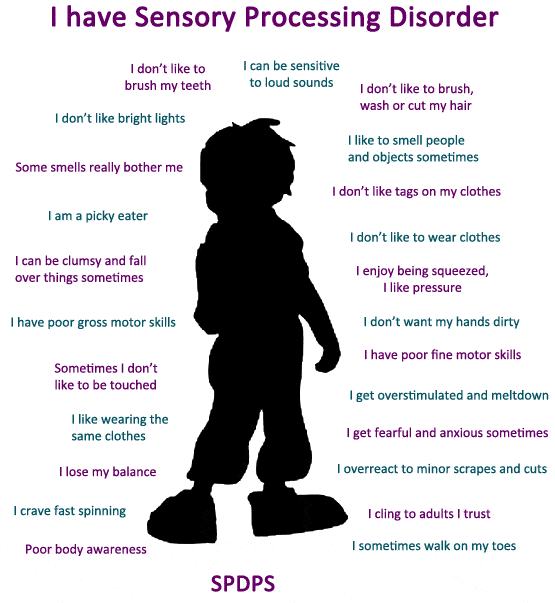Welcoming All Sensations: Embracing Children with Sensory Issues
Hey there, super parents! ? Are you curious about sensory issues and how they affect children? Well, you’re in the right place! Sensory issues or Sensory Processing Disorder (SPD) is often a misunderstood topic, but fear not, we’re here to unwrap this intricate subject delicately and provide you with a treasure trove of helpful info! Whether you’re just starting to notice signs of sensory challenges in your little one, or you’re on the quest for further knowledge, this guide’s your secret map to understanding and supporting your child’s sensory needs. So, buckle up and let’s take a joy ride into the world of sensory experiences!
What Are Sensory Issues?
Before we dive deeper, let’s set the stage by understanding what sensory issues are. Sensory issues occur when the brain has difficulty receiving and responding to information that comes in through the senses. Some kiddos might be over-sensitive to stimuli in the environment, while others could be under-sensitive, and some may swing between the two.
The Rainbow of Sensory Experiences
- Hypersensitive: These little explorers might feel overwhelmed by crowded spaces, dislike being touched, or could even find certain clothing textures unbearable. A tag at the back of a shirt might feel like a cactus, and the sound of a vacuum cleaner could seem as loud as a rock concert!
- Hypo-sensitive: On the flip-side, there are the kiddos who crave more sensory stimulation. They might not notice when their name is called, enjoy roughhousing more than other children, or could have a high tolerance for pain. They seek extra sensory information to feel just right.
Unraveling the Mystery of the Senses
We often talk about five senses, right? Sight, sound, smell, taste, and touch. But surprise! There are actually a couple more that play a key role in sensory processing:
- Vestibular Sense: This snazzy term is all about balance and spatial orientation. For some kids, swinging or spinning can be either immensely enjoyable or extremely distressing.
- Proprioceptive Sense: This unsung hero sense gives us the lowdown on body awareness. It tells us where our body parts are in relation to one another – it’s like our own internal GPS!
Signs of Sensory Issues in Children
Now that we’ve got our senses straight, how can we spot signs of sensory processing challenges in our children? Here’s a quick guide:
- Unusually high or low activity levels
- Extreme reactions to stimulus (covering ears, avoiding touch, etc.)
- Coordination difficulties
- Difficulties with tasks requiring fine motor skills
- Impulsive or distracted behavior
- Difficulty in transitions or changes in routine
But hey, let’s remember, each child is a unique masterpiece; what’s challenging for one might be a breeze for another. As parents, our superpower lies in observing and understanding the individual needs of our mini-heroes!
Supporting Your Child with Sensory Issues
The journey can be as colorful and varied as a kaleidoscope when it comes to supporting your child through sensory challenges. Here are some initial steps to take:
- Observation: Keep a keen eye on interactions and activities. What soothes your child? What stirs the pot? These notes can be pivotal in managing sensory issues effectively.
- Consultation: Touch base with a pediatrician or an occupational therapist who specializes in sensory integration. They can provide invaluable guidance and tailor-made strategies.
- Environment: Craft a cozy cocoon at home that caters to your child’s sensory preferences. This might mean creating quiet zones, integrating sensory play items, or having a dedicated space for movement and exploration.
By tuning into our children’s needs and reshuffling our environments and schedules a bit, we can help our little stars shine brightly, even in the overwhelming galaxies of sensation.
Dear reader, we’re just getting started! In this guide, you’ll discover the layers of managing and navigating sensory issues with hands-on strategies, real-life examples, and a toolbox of resources to help you and your junior astronaut soar through the sensory universe. So stay tuned, because there’s a whole lot more invaluable insights coming your way! Supporting your child through sensory challenges may sometimes feel like steering a spaceship through an asteroid belt, but together, we’ll navigate the cosmos and light the way to smoother space sailing!
abyssinian.analytics.com

Five Things Every Parent Should Know in Preparing for Sensory Issues
1. Early Detection is Key
Keep those eyes and ears open, attentive parents! Recognizing sensory issues early can make a universe of difference. Early detection means that you can jump into action promptly, providing the right interventions to help your child navigate the sensory world more effectively. It all starts with understanding what is typical for your child and what seems to be out of orbit.
2. Sensory Diets are Nourishing for the Brain
Just like we nourish our bodies with yummy foods, our brains need a “sensory diet.” But don’t worry, this doesn’t involve shopping for sensory snacks! It’s about creating a personalized plan of sensory activities that suit your child’s needs. This could include swings for balance, putty for touch, or listening to calming music. The right mix can help your child feel more organized and ready to conquer the world.
3. Space for Movement is Cosmic!
Space is not just where the stars shine—it can also provide a sanctuary for kids with sensory issues. Carving out an area in your home where your child can move freely is like giving them their own personal galaxy to explore. Whether it’s a corner stocked with pillows for crashing or a mini trampoline for bouncing, having this sort of outlet is key for sensory regulation.
4. Routines and Predictability are Like a Gentle Gravity
Just as gravity holds the planets in place, routines can provide a sense of predictability and security for children with sensory processing difficulties. Establishing a consistent daily schedule reduces anxiety and helps children understand what to expect next, easing transitions between activities. Remember, the aim is to create a rhythm, not a strict schedule set in stone!
5. Celebrate the Small Steps
Celebration time, come on! ? Every little victory is a step towards progress. The journey through sensory challenges can sometimes feel like you’re climbing a mountain, but don’t forget to look back and appreciate how far you’ve come. Acknowledge and celebrate the little moments—your child’s successful playdate, wearing a new type of clothing without discomfort, or simply enjoying a quiet meal together—these milestones deserve a high-five!
Understanding and preparing for sensory issues is an adventure, and while it comes with its share of nebulous moments, the journey can be filled with learning, growth, and love. Keep these five elements in mind as you gather your tools, chart your course, and prepare for lift-off. Together, you and your child are going to soar to interstellar heights on this sensory exploration. Ready, set, explore! ?
See more great Things to Do with Kids in New Zealand here. For more information see here
Disclaimer
The articles available via our website provide general information only and we strongly urge readers to exercise caution and conduct their own thorough research and fact-checking. The information presented should not be taken as absolute truth, and, to the maximum extent permitted by law, we will not be held liable for any inaccuracies or errors in the content. It is essential for individuals to independently verify and validate the information before making any decisions or taking any actions based on the articles.




